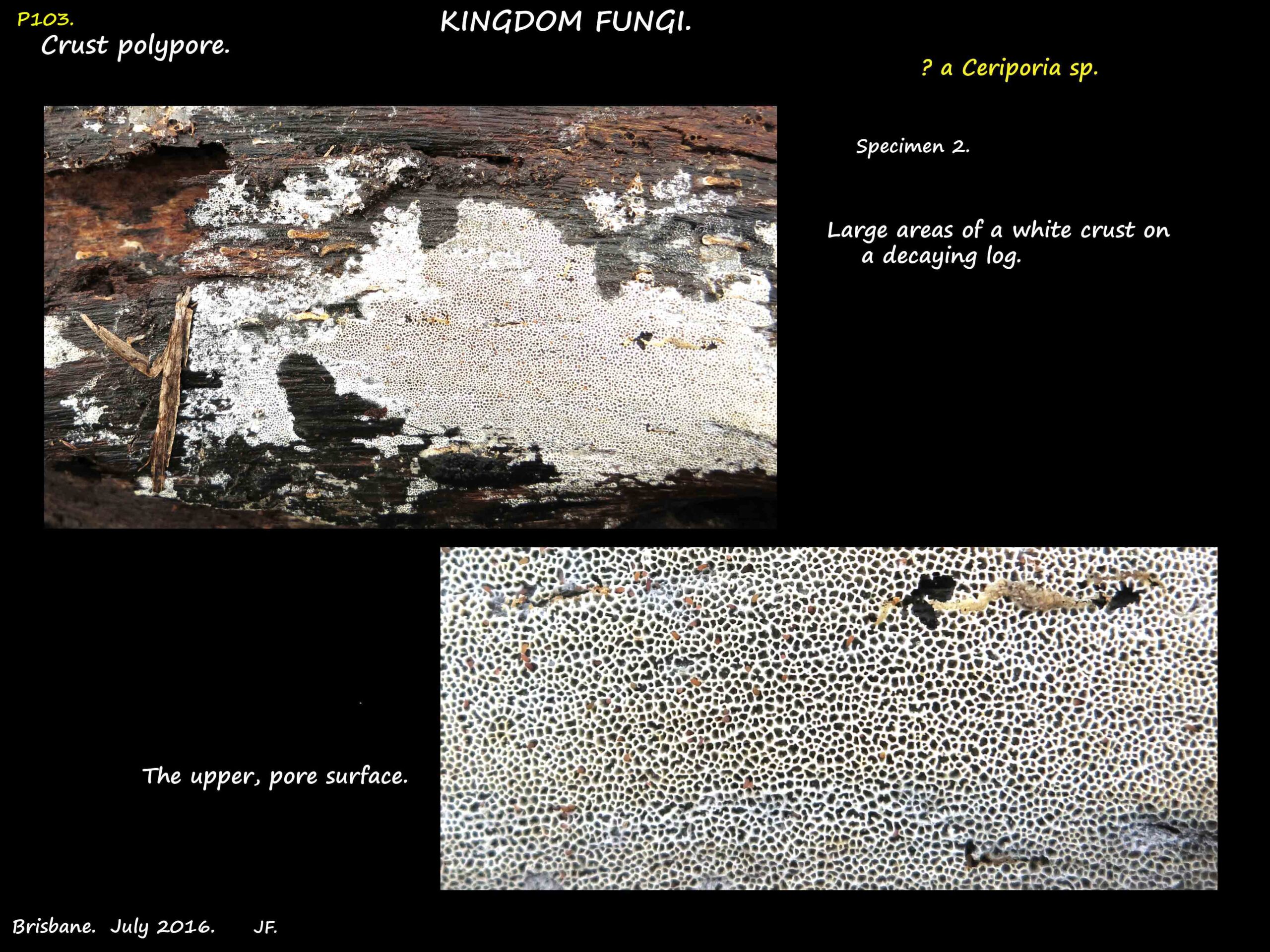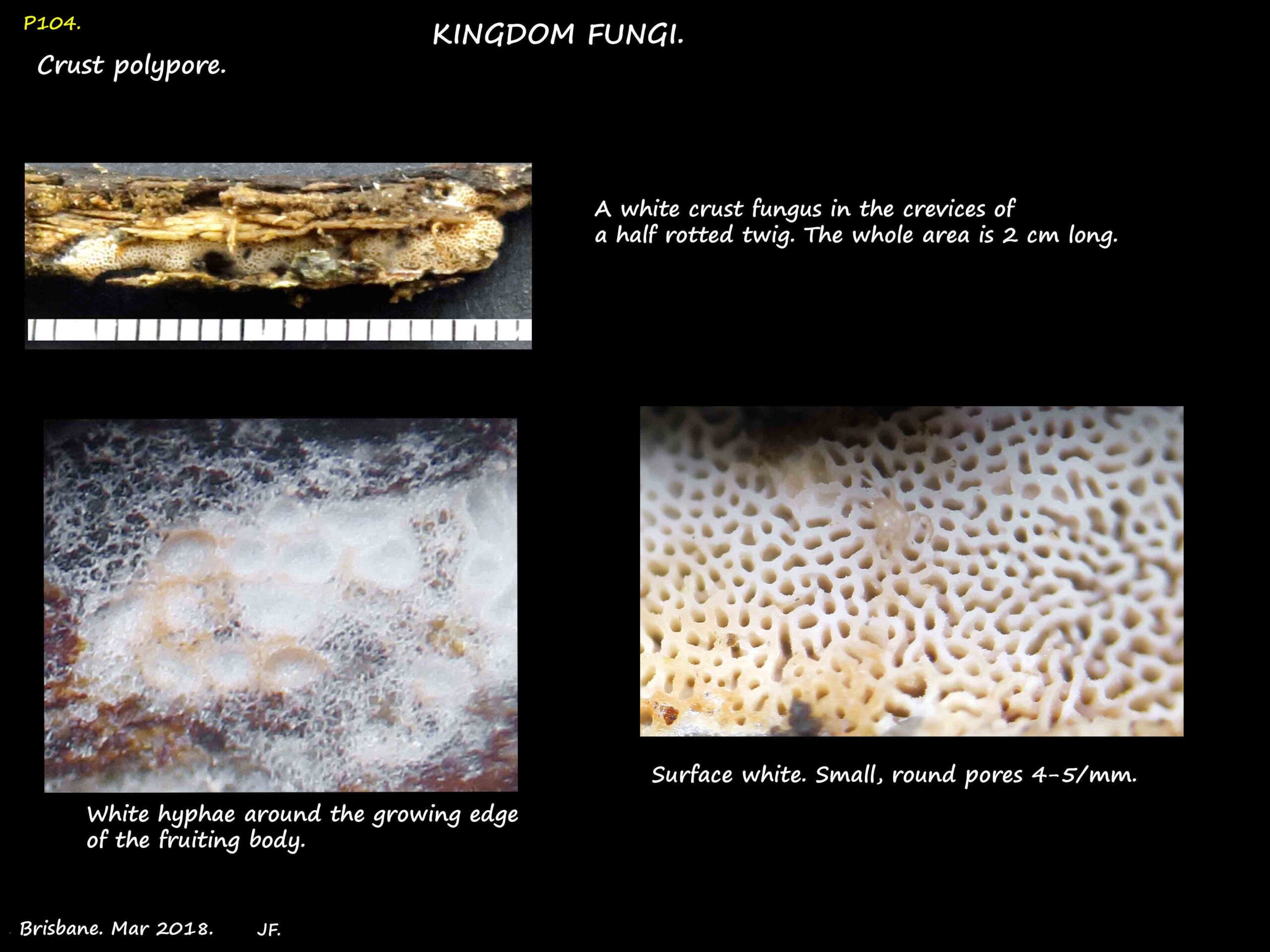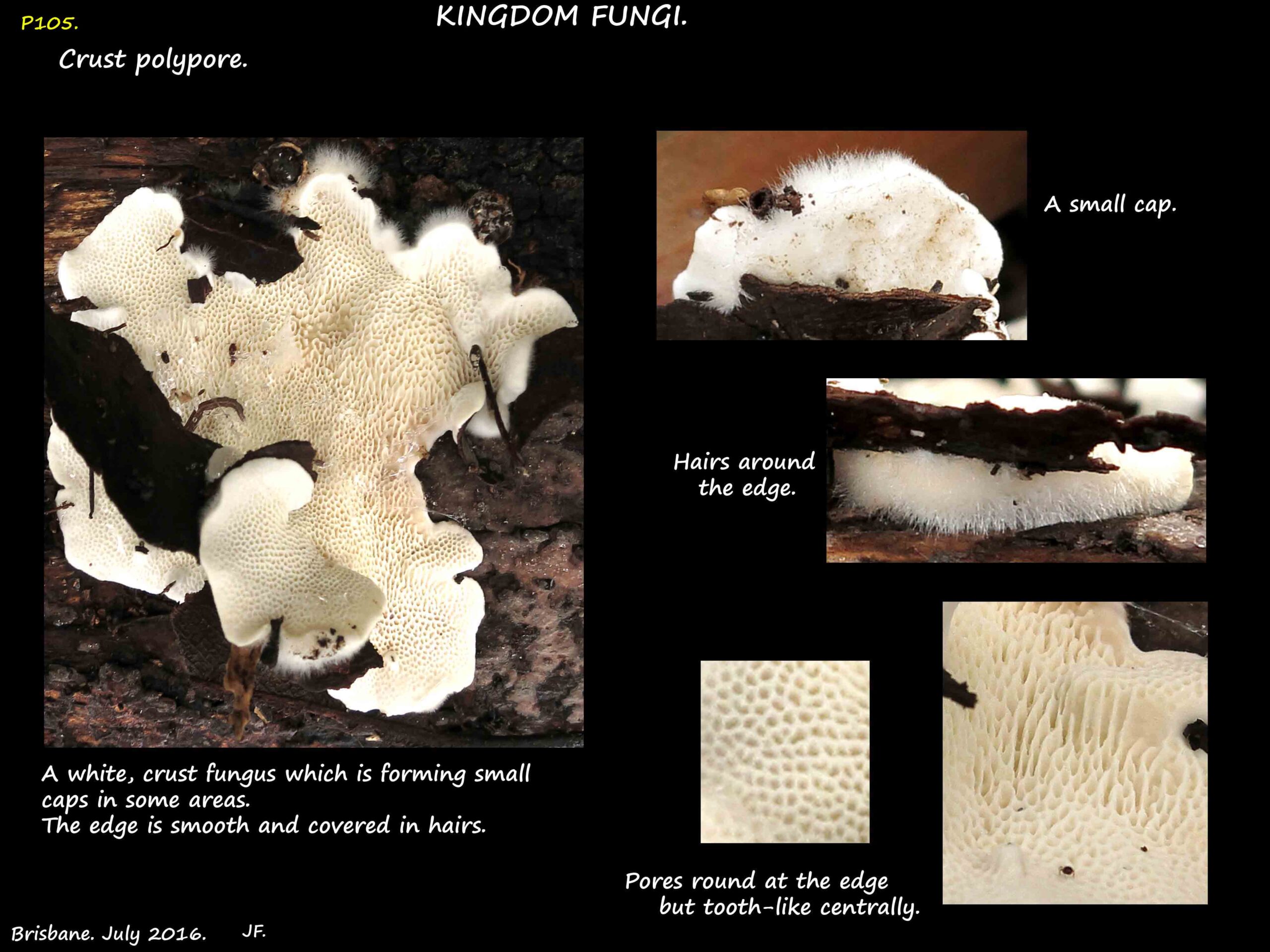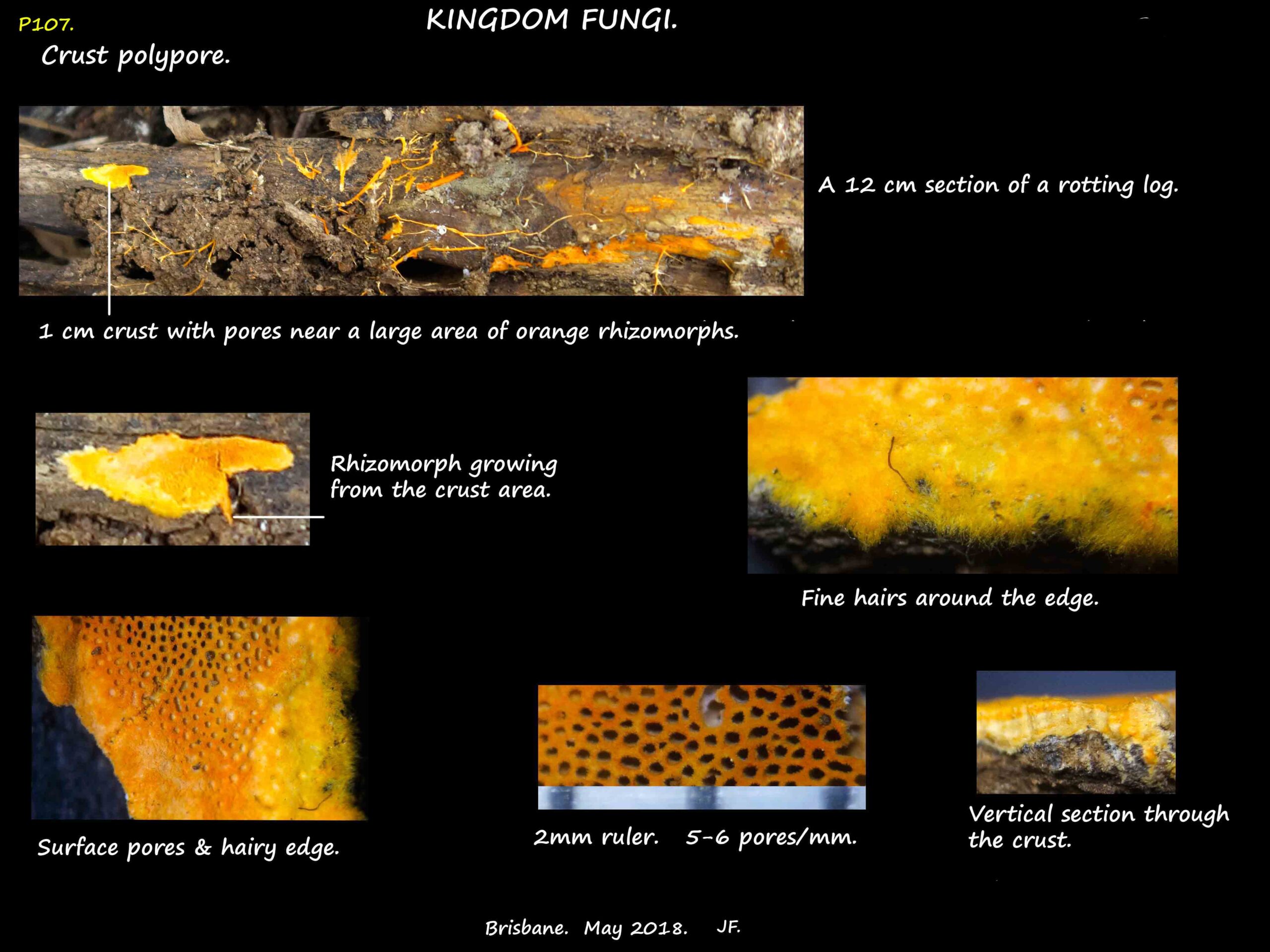Crust fungi.
All are Basidiomtycetes.
Corticioid, crust, patch or paint are non-specific terms for fungi whose fruit bodies form a flattish layer on
the surface of wood or sometimes leaf litter.
Most are wood-rotting fungi with the vegetative mycelium in the wood and producing the fruit bodies on the surface.
They can cause white or brown rot.
Size varies from a few mms to over 50 cm and adjacent ones often fuse.
They can be almost any colour and some form large rhizomorphs.
All two dimensional fungi were initially placed in the family Corticiaceae.
DNA studies have now shown they belong in 18 orders with about 250 genera and 1700 species.
A few have been left in the original family which is not well defined.
There are 2 basic types:
- Effused or flat.
These are 2 dimensional with only the spore bearing layer visible.
This can be pale or coloured, smooth, wrinkled (merulioid), have teeth or spines (hydnoid), be cracked, dull,
shiny, translucent or waxy. - Effused-reflexed.
Three dimensional – a flat crust plus a raised edge forming a small cap.
Stereoid fungi are crusts that form small caps and most of these are species of Stereum and Steccherinum.
The upper surface of the cap can be smooth or hairy.
Colours range from buff, brown, tan, red, orange, yellow to pink.
There may be concentric zones of varying colour and texture.
Most have pores but some have a smooth spore bearing surface.
The later (seen in the following section) are very difficult to identify and most require microscopy.
There are a large number of undocumented species.
J.F.









